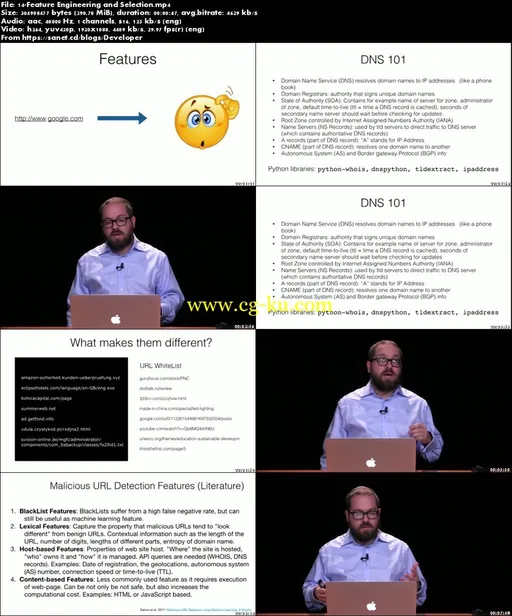
MP4 | Video: h264, 1920x1080 | Audio: AAC, 48 KHz, 1 Ch | Duration: 2h 34m | 4.32 GB
Genre: eLearning | Language: English
What is this video course about, and why is it important?
Today, arguably the most important field in the IT industry is security. With more and more commerce and business being conducted online every day, keeping data safe by detecting and repelling attacks is paramount to every organization. One area that shows great potential in the battle against hackers and their exploits is machine learning. Unleashing the increasing power and finesse of these systems toward defeating intrusions and data theft is no longer a theoretical pursuit. Indeed, machine learning is being used to defend systems and networks across an increasing range of industries and enterprises, so it’s no mystery that there’s also an increasing demand for skilled and qualified security specialists who can apply data science techniques to the task of data security.
This video course introduces you to machine learning and explains the concept at the core of machine learning, models, and how you “train” them to perform tasks and solve problems. This video course focuses specifically on “supervised” training, or learning, in a security context. Your host, cyber security specialist and data scientist Charles Givre, provides examples and use cases that use real security data and focus on actual applications of machine learning to security problems rather than contrived or superficial datasets. You will see how to build supervised machine learning models, evaluate and optimize their performance, and then apply these models in a security context. You will examine the theory and implementation behind the supervised machine learning techniques most relevant to security, including random forest, support vector machines, and more.
This video course is one in a set of three individual ones intended for security professionals who want to learn how to use and apply data science to their toughest security problems. Mr. Givre focuses on the tools and techniques that are directly applicable to the industry, and uses security problems and datasets to walk you through the entire data science process from end-to-end.
What you’ll learn—and how you can apply it
What machine learning is and how it can be useful, particularly in a security setting
How to build classification models using techniques, such as support vector machines and random forest, and use them in a security context
How to measure the performance of supervised machine learning models by developing metrics and through visualization
How to fine-tune your model to get the best possible performance
How to apply supervised machine learning techniques in a security setting using security related datasets
This video course is for you because…
You’re a security professional with some scripting skills and you want to apply data science techniques to your work to analyze data more efficiently
You’re a network analyst with some scripting skills and you want to use machine learning techniques to better secure your network
Prerequisites:
You should have beginner- to intermediate-level experience with the Python programming language
You should be familiar with security and networking concepts
You should be generally familiar with basic statistical concepts
Materials or downloads needed in advance:
Students are encouraged to use the Griffon Virtual Machine for Data Science, which is available at
https://github.com/gtkcyber/griffon-vm
.
(Griffon is a virtual machine with all data sources and all tools preconfigured)
Students should have access to a computer with at least 8 GB of RAM and 20 to 30 GB of hard drive space

发布日期: 2018-05-02